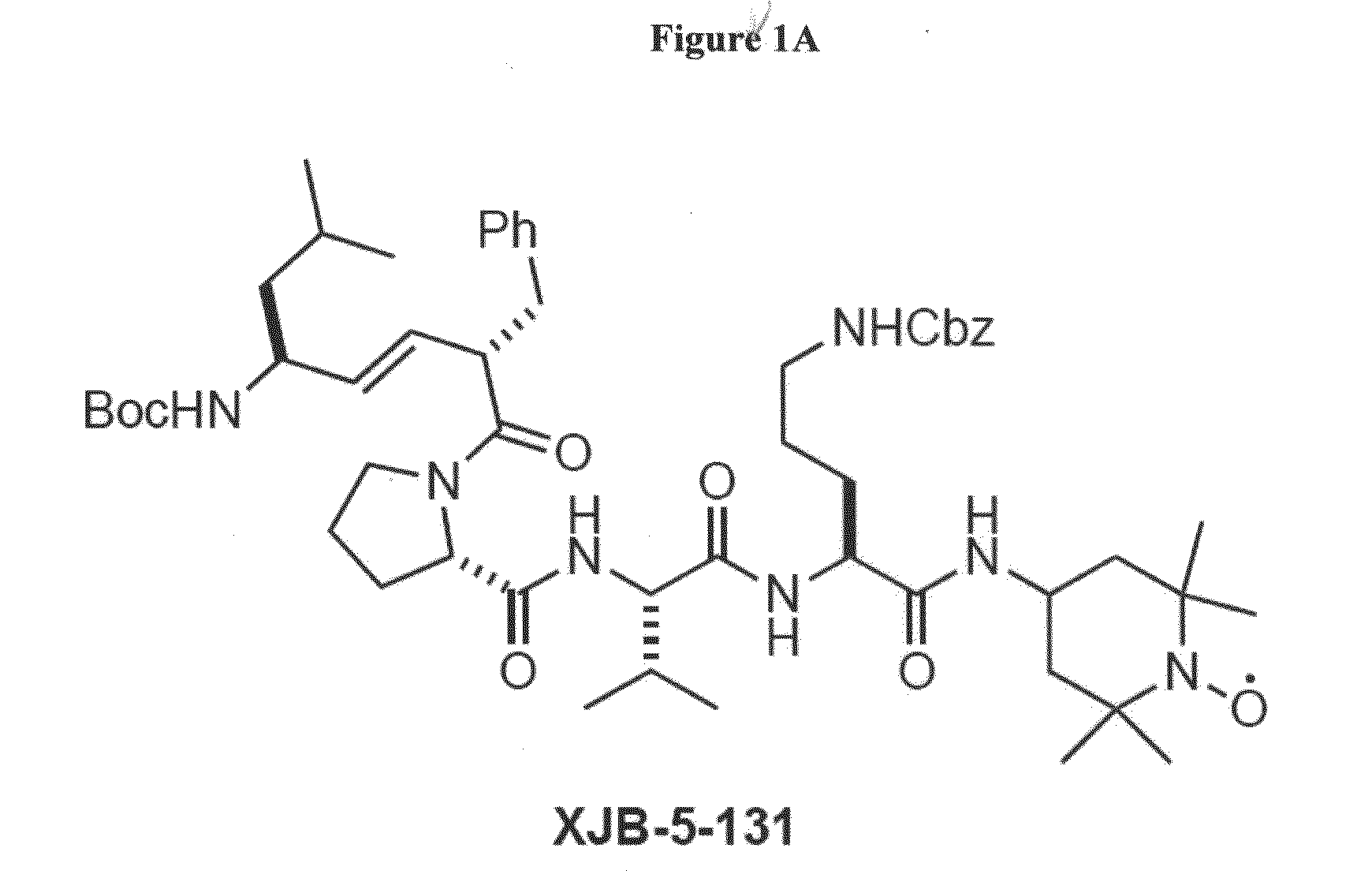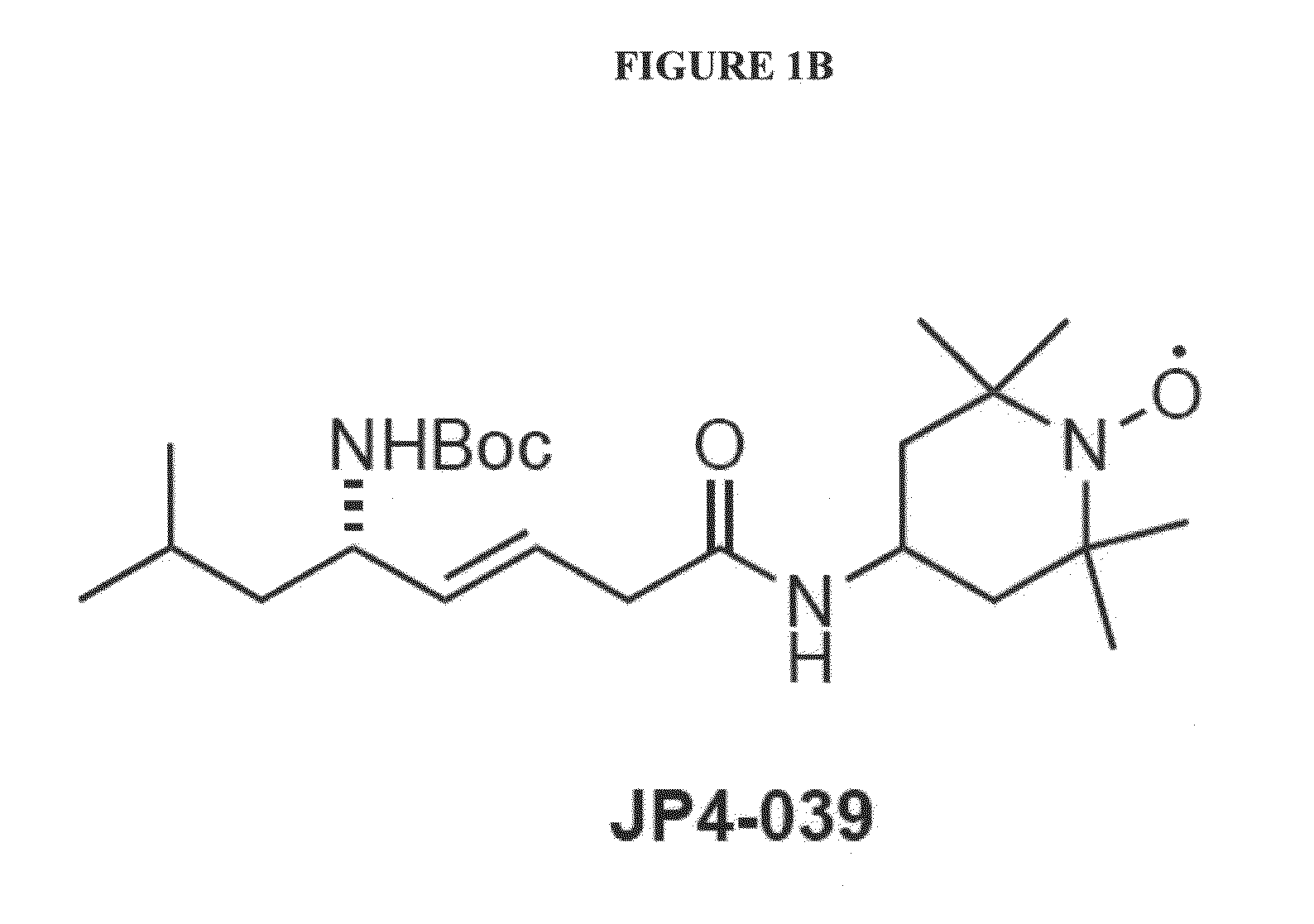Compounds for the treatment of pathologies associated with aging and degenerative disorders
a technology for pathologies and compounds, applied in the field of compounds for the treatment of pathologies associated with aging and degenerative disorders, can solve the problems of aging individuals' dramatic increase in the risk of numerous debilitating diseases, such as bone fractures, cardiovascular diseases, cognitive impairment, etc., and achieve the effect of preserving motor function and preventing the progression of symptoms of huntington's diseas
- Summary
- Abstract
- Description
- Claims
- Application Information
AI Technical Summary
Benefits of technology
Problems solved by technology
Method used
Image
Examples
example 1
6.1. Example 1
A Murine Model of Aging
[0096]ERCC1-XPF is a DNA repair endonuclease that is essential for nucleotide excision repair of bulky DNA adducts and the repair of DNA interstrand crosslinks, and contributes to the repair of double-strand breaks (Sijbers et al., 1996; Niedemhofer et al., 2004; Ahmad et al., 2008). The two proteins are obligate binding partners required to stabilize one another in vivo (Niedernhofer et al., 2006) and are thought to function exclusively as a nuclease in DNA repair (Sgouros et al., 1999). Mutations in Xpf that severely affect expression of ERCC1-XPF cause dramatically accelerated aging in humans including the epidermal, hematopoietic, endocrine, hepatobiliary, nervous, musculoskeletal and cardiovascular systems (Niedernhofer et al., 2006). There are strong parallels between this progeroid syndrome and other diseases caused by inherited defects in genome maintenance mechanisms including Werner syndrome, Cockayne syndrome, trichothiodystrophy, xer...
example 2
6.2. Example 2
Protective Effects of XJB-5-131
[0101]To assess the effectiveness of XJB-5-131 in inhibiting degeneration and / or signs of aging and age-related degenerative diseases, the compound was administered, over a 18-21 week period, to progeroid Ercc1− / Δ mice, at a dose of 2 mg / kg in sunflower seed oil carrier (to promote solubility) administered intraperitoneally three times per week (FIG. 7). Sunflower seed oil was administered to twin Ercc1− / Δ mice according to the same schedule as a control. The treated and control mice were monitored twice a week for weight and symptom / sign development.
[0102]FIG. 8 presents a summary table showing the age at onset of progeroid symptoms in Ercc1− / Δ mice treated one example of the compounds as disclosed herein, XJB-5-131 or vehicle only (oil). The aging score reflected the relative age at onset of progeroid symptoms in one mouse treated with XJB-5-131 vs. its sibling treated with oil only and was thus a measure of healthspan. In addition to ...
example 3
6.3. Example 3
Protective Effects of JP4-039
[0107]To assess the therapeutic potential of one example of the compounds as disclosed herein, JP4-039, tests for safety and protective activity were performed. FIGS. 15 and 16 show the results of tests to evaluate whether varying concentrations of JP4-039 produce toxic effects after 48 hours in cultures of MEF cells prepared from Ercc1− / − or wild-type mouse embryos, respectively. Even under the highest concentrations tested (10 μM), no signs of toxicity were observed in either culture system and cellular proliferation was enhanced relative to untreated control cells (media only).
[0108]To test the protective activity of JP4-039, cultures of primary MEF were prepared from Ercc1− / − mouse embryos and grown under 20% oxygen (ambient air), which creates oxidative stress in these cells that are hypersensitive to the reactive oxygen species. The cells were then either treated with a concentration of 1 μM of XJB-5-131, JP4-039, JED-E71-37 or JED-E...
PUM
| Property | Measurement | Unit |
|---|---|---|
| Structure | aaaaa | aaaaa |
Abstract
Description
Claims
Application Information
 Login to View More
Login to View More - R&D
- Intellectual Property
- Life Sciences
- Materials
- Tech Scout
- Unparalleled Data Quality
- Higher Quality Content
- 60% Fewer Hallucinations
Browse by: Latest US Patents, China's latest patents, Technical Efficacy Thesaurus, Application Domain, Technology Topic, Popular Technical Reports.
© 2025 PatSnap. All rights reserved.Legal|Privacy policy|Modern Slavery Act Transparency Statement|Sitemap|About US| Contact US: help@patsnap.com



